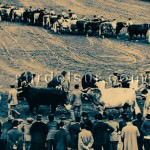Argentina produces a wide variety of types of crops. They can be grouped into: cereals and oilseeds, fruits, vegetables, and flowers; industrial crops such as yerba mate, cotton, tobacco, and sugar cane; and planted forests of economic importance due to their forestry and timber production.
Among the types of crops, oilseeds, cereals, and forage crops undoubtedly stand out, occupying 90% of the area dedicated to total agricultural production, which amounts to 37.4 MHa. Argentina has 6 main crops by production and area: soybeans, wheat, corn, sunflower, sorghum, and barley, which could reach 137 Mt in 2023/24.
However, many other crops also play a fundamental role in regional economies and the diversification of agricultural production. For example, we will refer to the peanut and lemon clusters. Argentina is the world’s largest exporter of manufactured peanuts, and peanuts oil; the world’s leading exporter of lemon juice and essential oils, and, the world’s second-largest exporter and the fourth-largest producer of fresh lemons.
This report will tell all the important facts about all the main types of crops in Argentina: Their characteristics, in which province they are grown, the importance of production in Argentina, and the place in the world market of each product.
Types of crops that Argentina produces
Thanks to Argentina’s prodigious geography that extends on North-South latitude, it has a great variety of climates and geographical regions, facilitating a great diversity of types of crops. We already refer to this topic in our map of crops by climate zone.
According to the classification of the last National Agricultural Census (2018), the types of crops are:
- Oilseeds
- Cereals
- Foragers
- Implanted forest and mountains
- Industrial crops
- fruit trees
- Legumes
- Vegetables
- Aromatic, medicinal, and condiments
- Nurseries
- Flowers
To develop the report on agricultural activities in Argentina, we group the types of crops as follows:
CONTENTS
Cultivation of cereals, oilseeds, and forages
Among Argentina’s agricultural products, the cultivation of cereals and oilseeds occupies a prominent place. As mentioned, the 6 main cereals by production and area are soybeans, corn, wheat, sunflower, barley, and sorghum.
Antes de continuar una breve definición:
- Cereals: Cereals are plants of the Poaceae family grown for their grain intended for food or fodder: wheat, rice, barley, sorghum, and others.
- Oilseeds: Oilseeds species are plants from whose seeds or fruits oils are extracted for two types of main purposes: food and industrial. In this group of crops, some of the best-known are sunflower, soybeans, corn, peanuts, to a lesser extent safflower, rapeseed, and flax, among others.
See comparative data and estimates by production and area of the 6 main cereal crops in Argentina >>
Soybean
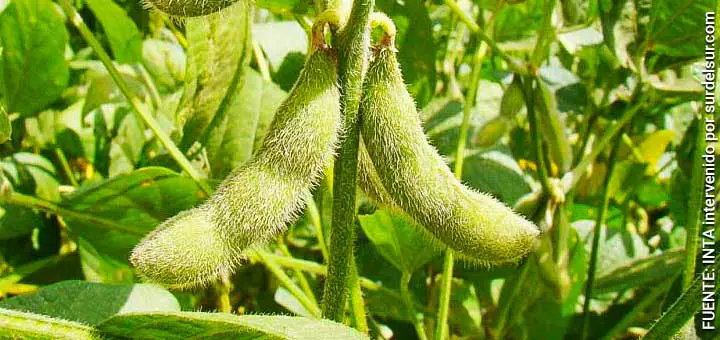
Soybean (Glycine max) is a plant from the legume family, its seeds have a high oil and protein content. The most planted soybean variety is Nidera A 5009 RG, a glyphosate-resistant seed with high yield potential. Soybeans are processed to obtain soy flour or milk. The oil is extracted, leaving a meal used as animal feed.
The main Argentine provinces that grow soybean oilseeds are Buenos Aires, Córdoba, and Santa Fe.
Taking into account an average of the last five years, Argentina is the world’s 1st exporter of soybean meal and soybean oil, 3rd world exporter of soybeans, and 3rd world producer of soybeans and meal soy. Within, the world oilseed market, Argentine production represents approximately 18% of the total.
(Source: BCR: Bolsa de Comercio de Rosario: El Agro argentino en el mundo)
Corn
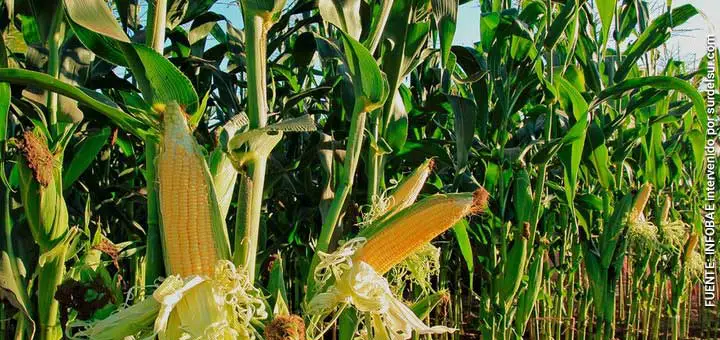
Corn (Zea mays) is an annual plant belonging to the Gramineae family. Originally from Mesoamerica, it is one of the oldest known food grains. The most cultivated varieties in Argentina are amylacea and indurata, followed by everta and indentata corn. The cob is consumed, and oil, flour, and cornstarch are also made, among other products.
This type of crop is grown in Argentina, mainly in the north and southeast of the province of Buenos Aires, south of Santa Fe, south of Córdoba, and north of La Pampa.
The local food and energy industries consume 30% of what is harvested in the country, the remaining 70% is sold as grain in external markets.
Argentina traditionally occupies 3rd place in corn exports behind the United States and Brazil. This annual position in the international grain market may vary according to the impact of the weather on the harvest. The Rosario Stock Exchange (BCR) projected the 2023/2024 corn harvest at a record level, at 59 million tons, which could occupy second place in corn exports.
(Source: BCR: Bolsa de Comercio de Rosario: El Agro argentino en el mundo):
Wheat
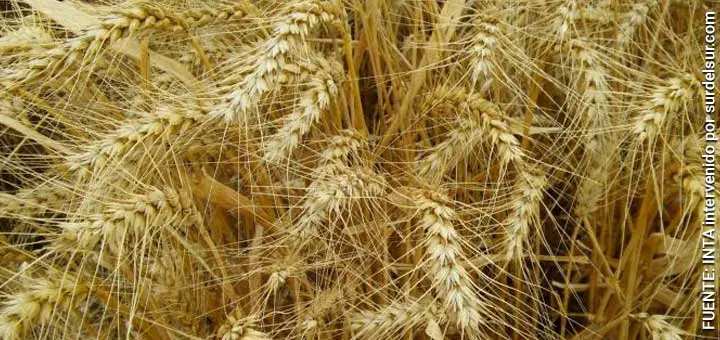
Wheat (Triticum) is an annual plant of the grass family, cultivated worldwide. The wheat grain is used for making flour, also whole wheat flour, and other products. More than 90% of the wheat produced is the so-called bread wheat belonging to the species Triticum aestivum, although the durum or durum wheat species are also used, mainly for pasta production. (SOURCE: www.argentina.gob.ar SISA wheat)
The main Argentina provinces producing wheat cereal are in descending order, Buenos Aires, Córdoba, Santa Fe, Entre Ríos, and La Pampa.
Argentina is traditionally one of the top 5 world exporters of wheat. It was historically its flagship crop. Wheat is the third most cultivated cereal in the world, after corn and rice. Argentina, with average exports of 11.6 Mt of wheat per campaign, has a 7% share of the world cereal market.
(Source: BCR: Bolsa de Comercio de Rosario: El Agro argentino en el mundo)
Sunflower
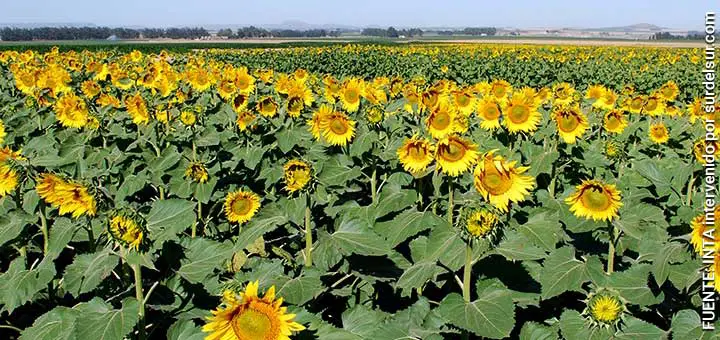
The sunflower (Helianthus annuus) is an annual herbaceous plant of the Asteraceae family. It is native to Central and North America. The seeds are edible and sunflower oil is extracted from them. This oil has a high content of vitamin E. Linoleic sunflowers are mainly grown for the production of oil, which is the conventional oil. However, high oleic sunflowers are also grown, given the growing global demand for healthy foods, since they contain 80% oleic fatty acid. The waste from the oil industry and the leaves are used as livestock feed, and the fiber from the stems is destined for the paper industry.
Although 50% of sunflower production in Argentina is located in the Province of Buenos Aires, the remaining planted areas take place in marginal areas of the country: the province of Chaco, north of Santa Fe, Santiago del Estero, east of La Pampa, and southwest of Buenos Aires.
According to the BCR, Argentina appears as the 3rd exporter of sunflower flour and oil, representing 7% of total exports in a world market dominated by Russia and Ukraine. It is seen as a productive sector having a growing national presence, marketing on average 1 Mt of each by-product during the last two campaigns.
Barley
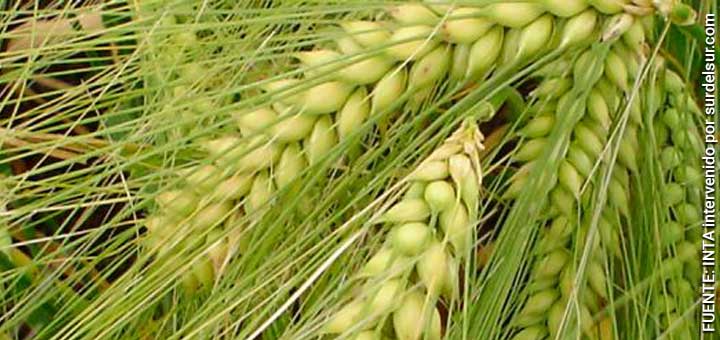
Barley (Hordeum vulgare) is a Gramineous. Two varieties are mainly grown: Hordeum distichum, which is used for brewing beer, and Hordeum hexastichum, which is used as fodder for animal feed and the food industry. However, in Argentina, the product is associated with the beer industry and the Andreia variety makes up almost the entire barley crop.
The most important areas cultivated with barley are found in the southeast and center/north of the province of Buenos Aires, which concentrates approximately 90% of the production, the rest is divided into the south of La Pampa, the south of Córdoba and the province of Santa Fe.
On the other hand, barley occupies the 5th place in importance in cereals and grains production in Argentina, after soybeans, corn, wheat, and sunflower. Also, barley is the 5th most produced and most traded crop worldwide, with a 3% share of the global cereal market.
(Source BCR: Report)
Sorghum
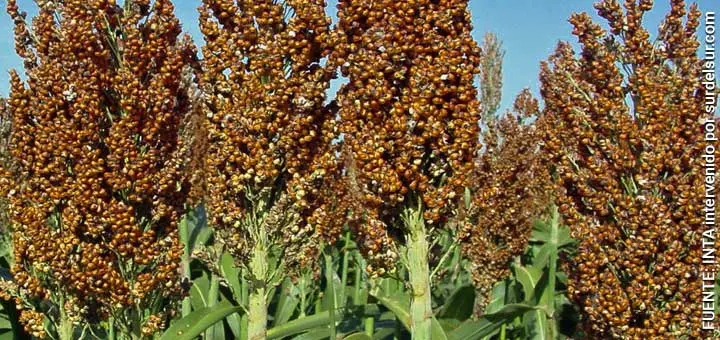
Sorghum (Sorghum) is a genus of Poaceae native to East Africa that is also cultivated in Europe, America, and Asia as a cereal for human consumption and for animal consumption in the production of forage. The S. Sudanese type is the basis of most forage sorghums. While the white, yellow, brown, or reddish S. Caffrorum is the most used for grain crops and the S. Technicum is the sorghum for brooms. Its nutritional importance lies in the fact that it does not contain gluten and can be used as food for celiacs. (SOURCE: INTA Sorghum)
It is cultivated in 14 of the 23 Argentine provinces, the most important being in descending order Santa Fe, Córdoba, Santiago del Estero, and Buenos Aires with a planted area of around 60% of the total cultivated area that does not reach 1 MHa (Source BCR Report)
The sorghum exported by Argentina represents 15% of the world market, with China being the main importer.
Peanut

Peanut (Arachis hypogaea) is a legume species native to South America, currently spread worldwide. The variety with the largest planted area in Argentina is GRANOLEICO with 75-80% oleic acid in its composition. Despite being a legume, it’s considered a nut by international food legislation. Peanuts are also often considered among oilseed crops due to their high oil content.
The peanut-producing provinces are in descending order: Córdoba 88.39%, San Luis 6.67%, La Pampa 3.24%, Santa Fe 0.95%, Salta 0.51%, Buenos Aires 0.17%, Jujuy 0.05%
Both the cultivation and industrialization of peanuts constitute a regional economy. where primary producers are effectively integrated into the industry and export, forming part of a value chain that energizes the region’s economy. Production is located mainly in the central and southwestern sectors of the province of Córdoba. Almost all of its production is destined for international markets. The peanuts grown in Córdoba carry the name of Córdoba Peanut – Certification of Origin. (BCCBA)
Argentina is the world’s largest exporter of manufactured peanuts and peanut oil. It’s the main supplier to the European Union.
Rice
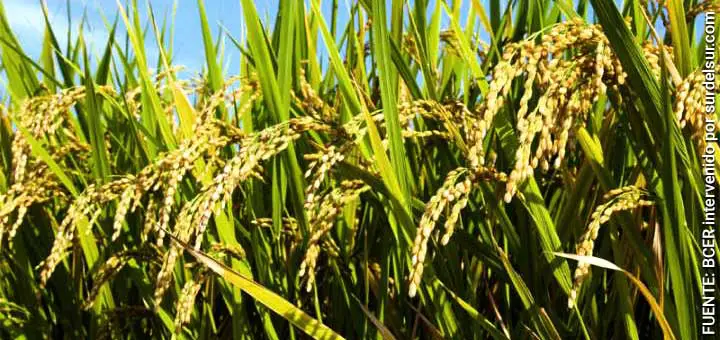
Rice cultivation is mainly represented by two cultivated species, the seed plant Oryza sativa (Asian rice), and Oryza glaberrima (African rice). They belong to the Gramineous family, whose properly processed seed constitutes the food base of more than a third of the world’s population. It occupies second place in global production after corn. (Source: MAGyP see Rice Market). Forty-five varieties of cultivated rice were identified in Argentina
Rice production in Argentina is concentrated in the provinces of Entre Ríos (32%), Corrientes (50%), Santa Fe (13%), Chaco, Formosa, and Misiones. (MinAgri). The average production in recent years used to be 1.5 million tons.
The drop in the crop area is due to the decrease in rice producers, reduction in the planted area, lack of financing, adverse climatic factors, and the increase in energy. The downward trend has been maintained for several years.
Flax
Flax or linseed (Linum usitatissimum) is a herbaceous plant of the Linaceae family, native to the Middle East. Its stem serves as fiber for fabrics and its seed, called linseed, is used to produce flour and oil. Flax seeds can be found in brown or golden varieties and be consumed whole and ground.
It is produced in the provinces of Entre Ríos and Buenos Aires.
Argentina was the world’s leading flax (linseed) exporter but the market collapsed in the 1930s.
Fruit Growing
Fruit production largely coincides with horticultural areas.
In the case of citrus fruits, they are grown in NOA and NEA, in this last region particularly on the banks of the Paraná River between Rosario and San Pedro, favored by the long frost-free period and high humidity coefficients.
On the other hand, vines are successfully cultivated in the Northwest, Central West or Cuyo regions, and South, close to the Andes Mountains, which provide meltwater forming rivers used for irrigation. (SeNaSa)
The pome or pome fruits shine in the Río Negro Valley or Alto Valle del Río Negro. This region is on the banks of the river formed by the confluence of the Limay and Neuquén rivers. Located north of extra-Andean Patagonia in Argentina, this area is characterized by its intensive agriculture and low irrigation of fruit trees.
Citrus fruits: Lemon, Orange, Tangerine and Grapefruit
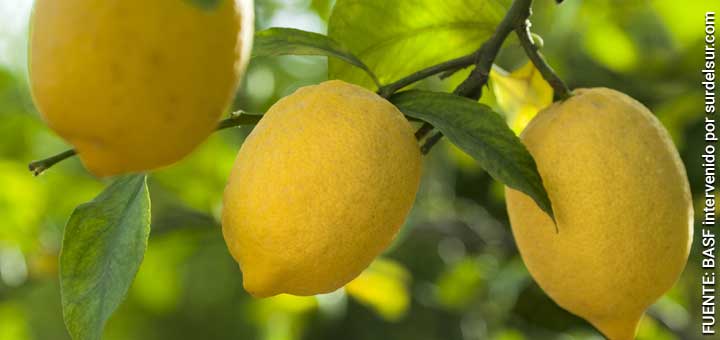
Citrus fruits (citrus) are medium-sized perennial trees of the Rutaceae family, native to tropical and subtropical Asia. Its fruits are characterized by their juicy pulp, with a high vitamin C content, and citric acid, which gives them their characteristic acid flavor. They are consumed as fresh fruits, juices, and flavoring, in addition to the multiple applications of citric acid.
Argentina is the eighth-largest producer of citrus fruits in the world.
The main Argentine provinces producing commercial citrus, ordered by importance in production, are Tucumán, Entre Ríos, Salta, Corrientes, Jujuy, and Misiones.
National lemon production reaches a volume of 1.3 million tons, 90% produced by the province of Tucumán. Entre Ríos produces oranges and tangerines; and Salta grapefruits. (EEAOC). The provinces of the NOA produce 65.38% and those of the NEA 43.62% of the national citrus production. (INTA)
The main production corresponds to lemon (47%), followed by orange (29%), tangerine (16%) and grapefruit (8%).
Among citrus fruits, the flagship crop has been the lemon. The varieties of lemons grown are Eureka Frost (35%), Lisboa Frost (24%), Limoneira 8A (24%) and Génova EEAT(11%). Argentina is the world’s leading exporter of lemon juice and essential oils, the second-largest exporter, and the fourth-largest global producer of fresh lemons.
(DCA del Ministerio de Agricultura, Ganadería y Pesca, Argentina, ver Informe del limón).
Pome fruits: apple and pear
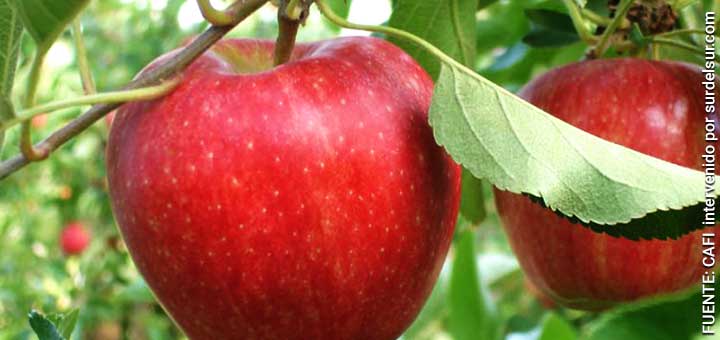
Pome fruits are fleshy, with around 5 small seeds, like the pear and apple native to Asia. They are consumed fresh and used in juices, preserves, and dried fruits.
The main apple variety is the Red Delicious with 65% of the total area, followed by the Granny Smith (13%) and the Royal Gala (12%).
As for the pear, the Williams variety is the most produced (45%) and that gives us a competitive advantage because it is the most difficult to grow worldwide. Other varieties grown in our country are Packhams (30%), Beurré D’Anjou (10%), and others in a smaller proportion.
85% of apple production and 75% of pear production are concentrated in the Upper Valley of Río Negro and Neuquén. This region is located on the banks of the Negro River and the two rivers that, when they converge, form it: the Limay and Neuquén rivers. The Alto Valle is considered the pear and apple-producing area par excellence. The rest is generated mainly in the Uco Valley (Mendoza). With much lower production is 25 de Mayo in La Pampa and the Tulum Valley in San Juan, among other points.
The productive and commercial linkage in Pome trees (apple and pear), located in the provinces of Río Negro and Neuquén, represents 87% of the country’s cultivated area (53,500 hectares), as well as 84.7% of production and 95% of fresh and industrial exports. (Source: CAFI)
While the largest percentage of pear production, 53%, is destined for export, only 17% of apples is exported.
Argentina is the 1st exporter of pears in the Southern Hemisphere and the 5th exporter of apples worldwide. (Source: CAFI) Meanwhile, it leads exports of organic pears and apples to the European Union (EU). (Source: DG AGRI, of the European Commission).
(Source: www.cafi.org.ar)
Vine
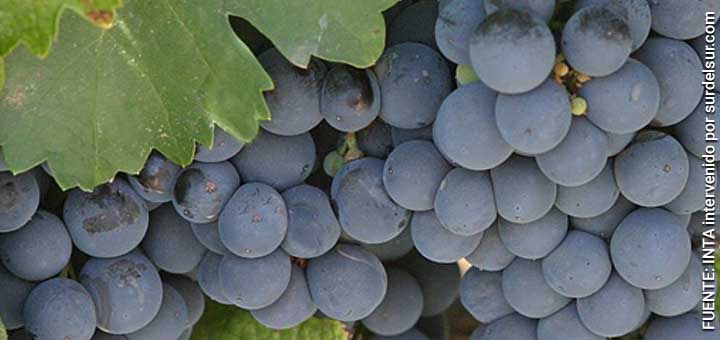
The vine (Vitis vinifera) or grapevine, is a semi-woody climbing plant, which fruit is the grape. The fruit obtained can be used fresh as table grapes, or as derivatives such as raisins, wine, must, grape juices, and vinegars, among others. Given the geographical diversity, there is a great variety of grapes in Argentina one of the most iconic being the Malbec grape from France.
In Argentina, Viticulture develops, between 22º and 44º south latitude, with an altitude between 500 and 1500 meters above sea level. There are three different viticultural zones, mainly located in arid areas: Northwest Region: provinces of Salta, Jujuy, Tucumán, and Catamarca; Central West or Cuyo Region: La Rioja, Mendoza, and San Juan; and Southern Region: Neuquén, Río Negro and La Pampas. According to the INV, the area destined for grape cultivation is 224 thousand hectares, located mainly in the province of Mendoza (71%) and San Juan (21%).
In the case of Mendoza, 98.65% of the planted area is allocated to varieties for winemaking.
On the other hand, San Juan represents 80% of the national production of table grapes, of which 60-70% is exported. (Source: CONINAGRO I, INTA II) and is positioned as the main producing and exporting province of table grapes.
In 2013, the Argentine Wine National Drink was established with the sanction of Law No. 26,870, to disseminate the tradition and cultural characteristics involved in its production, elaboration, and consumption.
Argentina is the 10th largest wine producer in the world (SOURCE: Mendoza Stock Exchange) and exports wine to 127 countries, with the United States, United Kingdom, Canada, Brazil, and the Netherlands being the largest importers.
Legumes Cultivation

The seed contained in plants of the legume family (Leguminosae) is called a legume. In Argentina, the legume complex is peas, chickpeas, lentils, and beans.
Lentils (60%) are the legumes most accepted by the Argentine consumer, followed by peas (23%) and finally beans and chickpeas (17%).
The three main provinces producing legumes are, in descending order, Salta with 54% (197,007 ha), Córdoba with 13% (48,961 ha), Santiago del Estero with 10% (36,344 ha)
Below is the list of legumes produced in Argentina and the provinces in which they are grown:
- Dried beans: Salta, Jujuy, Tucumán, Santiago del Estero, north of Santa Fe
- Chickpea: Córdoba, Buenos Aires, Tucumán and Salta
- Lentil: Buenos Aires, south-central Santa Fe and Córdoba
- Dry Pea: Buenos Aires, south-central Santa Fe and Córdoba
This complex is characterized by having a high export profile. Around 60% of the production is exported, mainly beans.
(Source: Ministerio de Agricultura Ganadería y Pesca Document)
Vegetable Growing
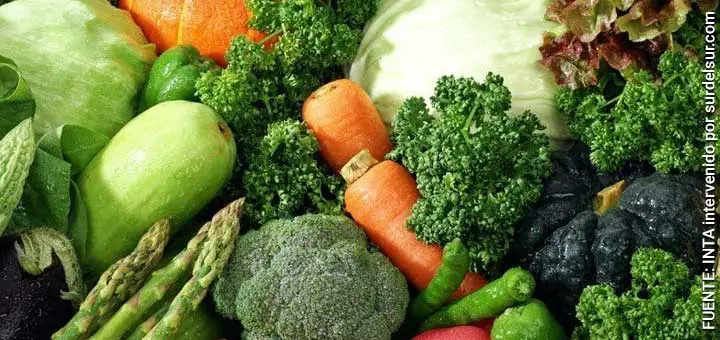
Vegetables are plants generally grown in gardens and consumed as food. This classification does not correspond to any botanical foundation. Argentine horticulture is characterized by its wide geographical distribution and the diversity of species it produces. The greater development of some areas for commercial horticulture is due to their greater proximity to distribution and consumption centers. Likewise, it has an important intervention in regional economies due to its demand for labor and inputs.
According to a SAGPYA report (2006), the provinces that stand out most for their horticultural production in descending order are Buenos Aires, Mendoza, Córdoba, Santiago del Estero, Misiones, and Corrientes.
According to an analysis by INTA (2009-2012), vegetable growing is estimated to cover 600,000 hectares. Unfortunately, at the national level, there is no annual information on the volume of horticultural production
However, it stands out fundamentally for its high economic value per unit of weight and its high production per unit of cultivated area (Corporación del Mercado Central de Buenos Aires).
65% of total production is represented by the following vegetables: potatoes, tomatoes, onions, sweet potatoes, pumpkins, carrots, lettuce, and garlic. Six other species participate with 20%: chard, cassava, zucchini, corn, eggplant, and pepper. The remaining 15%: is covered by other vegetables.
The largest production of potatoes is found in Buenos Aires, Santa Fé, Córdoba, Mendoza, and Tucumán. (SeNaSa)
90% of what is produced by the Argentine horticultural sector is consumed fresh, the remaining 10% is industrialized, and the most important destination is the canning industry, followed by the freezing and dehydrating industries.
Around 93% of national vegetable production is destined for the domestic market and 7% is exported. Garlic and onion are mainly exported to Brazil.
(Source: argentina.gob.ar Document)
Flower Cultivation

Floriculture is a discipline that consists of growing different types of flowers and ornamental plants in an industrialized way for decorative use. The total area destined for flower production is estimated at 2,500 hectares. It is also characterized by, the small size of the productive units and their high profitability.
According to a report prepared by the Ministry of Rural Development and Family Agriculture of the Nation, 50 percent of the total Argentine flower production is concentrated in the Province of Buenos Aires, particularly in the municipalities of La Plata, José C. Paz, Moreno, Escobar, Pilar, Exaltación de la Cruz, Florencio Varela, and Berazategui. The other half of the ornamental plants and flowers produced in the country are distributed among the provinces of Corrientes, Misiones, Santa Fe, Córdoba, Salta, Jujuy, and Tucumán.
The domestic market consumes 95 percent of the marketing of flowers and ornamental plants produced in the country. It is the largest market in South America along with Brazil.
Industrial crops
Industrial crops are those that require an industrialization process before consumption. Among them are yerba mate, cotton, tobacco, and sugar cane.
Yerba mate

Yerba mate (Ilex paraguariensis) is a neotropical tree species native to the subtropical regions of Argentina, Brazil, and Paraguay. Its consumption in our country and neighboring countries has been a tradition since the time of the Jesuits.
The production area is the NEA with a total of 165,326.8 hectares of cultivated area. This region includes Misiones with 144,118.2 hectares (87.2%) and Corrientes 21,208.6 hectares (12.8%). (Source: 06/2019 DCA of the Agroindustry Secretariat. See: Yerba Mate Chain). Argentina has the largest cultivated area of yerba mate worldwide, followed by Brazil and finally Paraguay.
Without a doubt, yerba mate is a product of great importance in the regional economy, given that its production is in the hands of smallholder producers. 80% of the 19,000 yerba mate producers in Misiones and Corrientes have less than 10 hectares planted (Ministry of Agriculture and Production, 2002).
Argentina is the world’s 1st exporter, 1st country with the largest harvested area, and 2nd world producer of yerba mate. Brazil, Paraguay, Uruguay, southern Chile, and Bolivia have 95% of world consumption.
Cotton
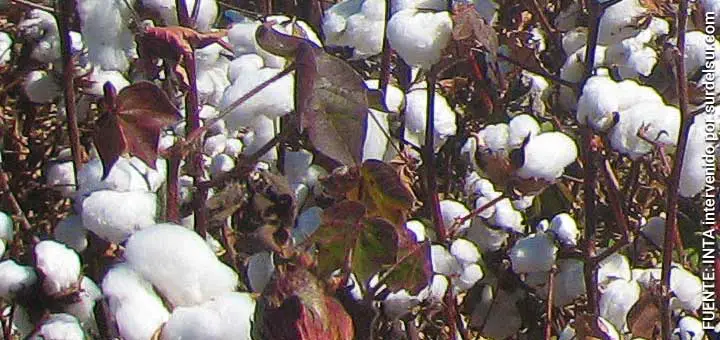
The cotton plant (Gossypium) is a shrub that belongs to the Malvaceae cotton family and is native to tropical and subtropical regions. There are different native species in America, Africa, and India. The word cotton derives from Arabic. It is of great economic importance because cotton fiber for textile use is obtained from its fruits.
Currently, 90% of cotton is located in the provinces of Santiago del Estero (46%), Chaco (29%) and Santa Fe (15%). Also, with lower participation are Salta (6%), Formosa (2%), and San Luis (2%).
According to the United States Department of Agriculture (USDA), Argentina is the 12th country in cotton cultivation and production area. Meanwhile, in terms of performance, our country is in 20th place in world cotton production.
During the last 10 years, 20% of production would be destined for export, according to the Agricultural Intercooperative Confederation, Coninagro.
Tobacco
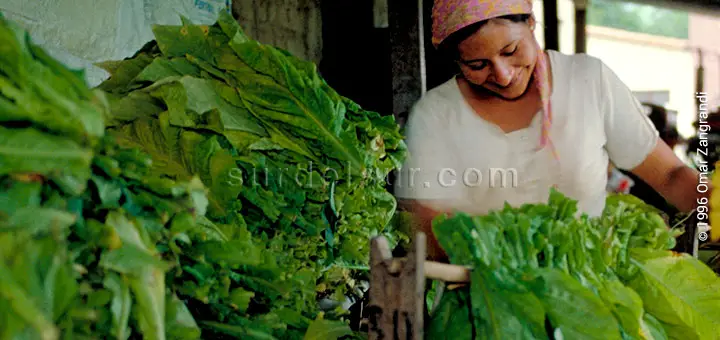
Tobacco (Nicotiana tabacum) is an annual herbaceous plant, of the Solanaceae family, native to tropical America and from whose leaves most of the tobacco consumed today in the world is produced.
Virginia-type tobacco is grown in the provinces of Salta and Jujuy. On the other hand, the Burley-type tobacco is characteristic of the province of Misiones and Tucumán. Criollo tobaccos are mainly produced in the Chaco and Corrientes provinces. (MAGyP)
The provinces of Jujuy, Salta, and Misiones concentrate 84% of the country’s production, and the three concentrate more than three-quarters of the total area in the country, allocated to tobacco. Misiones is characterized by the predominance of small producers with little or no levels of technology. Just over two-thirds of the country’s producers are located there, in addition to being the first in a cultivated area (MECON). The remaining 16% of tobacco production corresponds to Tucumán, Corrientes, Catamarca, and Chaco.
Tobacco production is exported between 70 to 80% of its production (Ministry of Agroindustry). Despite the increase in energy costs and the decline in production, the sector is optimistic. This regional economy may be favored by greater external demand.
Caña de azúcar
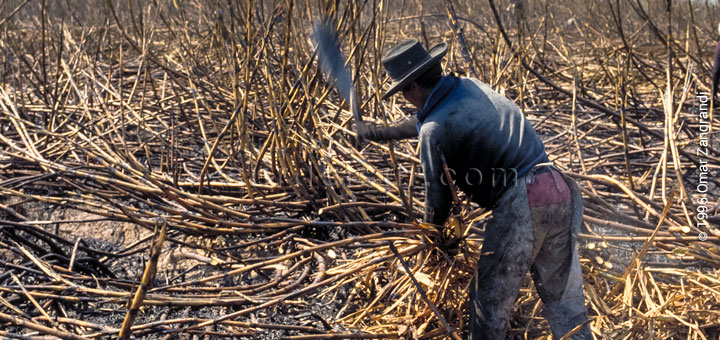
Sugar cane (Saccharum) belongs to the Gramineae family and is the raw material for making sugar, alcohol, and biofuel. It is native to the warm temperate and tropical regions of India, Southeast Asia, and New Guinea. It is a multi-year crop with a cycle duration that ranges from 5 to 7 years. The harvest is seasonal and takes place from the end of May to October.
It is grown in the NOA: Tucumán, Salta and Jujuy. This region has a 98% share in the national market, completed with 2% from Santa Fe and Misiones.
The report prepared by the Territorial Information Systems Laboratory of INTA Famaillá is the first survey through satellite images of the area cultivated with sugar cane in Argentina. The report indicates that the country had 376,223 hectares in the 2018 harvest.
Production is around 14 million tons of cane (Obispo Colombres Agroindustrial Experimental Station, EEAOC). This production is destined for 23 sugar mills that produce sugar, and 16 distilleries to obtain alcohol for biofuel production.
Planted Forests
The planted forests are intended for wood production. Once cut and dried, the wood is used in construction and making furniture and other elements. Used as fuel it is called firewood. It is also used to make pulp, or pulp raw material for making paper.
Forestry and timber production, mainly pine and eucalyptus, has been expanding, in the Mesopotamian provinces.
The country has 20 million hectares suitable for forestry activity. The climate and soil conditions allow for high growth rates of the planted forests and reduced cutting shifts. These are among the best in the world.
WAS THE ARTICLE USEFUL TO YOU? SAVE IT!!
READ THE RELATED ARTICLE…!
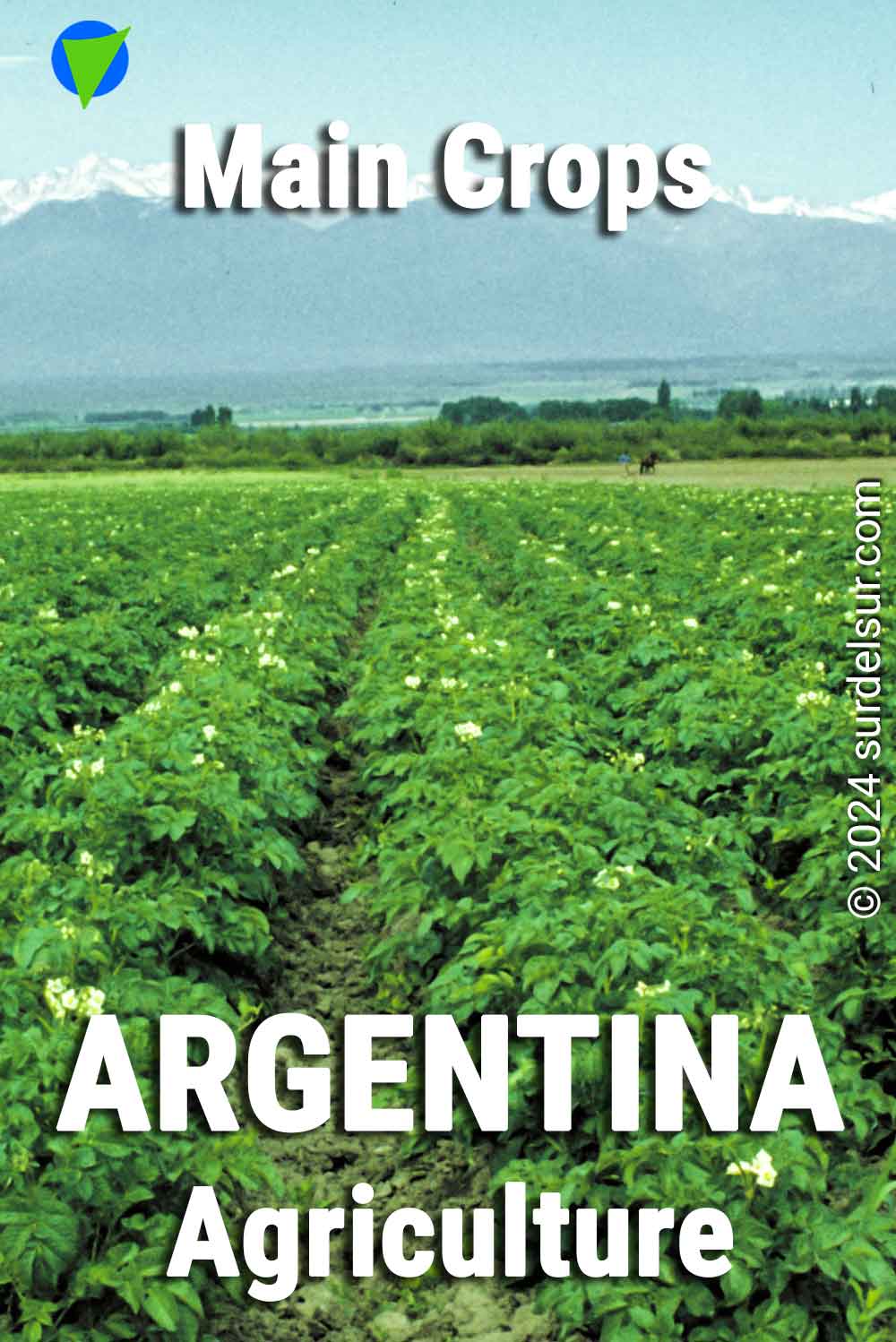
Bibliography:
- Asociación Argentina Pro Trigo: Cultivated area and production of wheat from 1995
- INTA: Maps with areas of crops of corn, wheat, sorghum, soybean, and sunflower.
- SIIA: Sistema Integrado de Información Agropecuaria. Estadísticas de la Dirección de Información Agropecuaria y Forestal, Subsecretaría de Agricultura. Agricultural Statistics.
- Fernando Bertello (28/04/2014) Sharp drop in the countryside in 10 years. Diario La Nación.
- INET: Instituto Nacional De Educación Tecnológica. Horticulture in Argentina Final Report.
- MINCYT: Ministerio de Ciencia, Tecnología e Innovación Productiva. Sobre el perfil sectorial de la producción de Frutas Cítricas: Weaknesses and technological challenges of the Productive Sector Citrus Fruits in Corrientes, Entre Ríos and Tucumán.
- EEAOC: Reporte Agroindustrial Relevamiento satelital de cultivos en la provincia de Tucumán. Harvested Area and Production of Sugarcane and Sugar for 2018 in Tucuman Zafra
- Argentina is the world’s leading exporter of pears. Suplemento Supercampo. Diario Perfil
- Víctor Rau. (2008) Yerba Mate in Misiones (Argentina). Structure and meaning of production. IV Congreso Internacional de la Red SIAL. Mar del Plata. Argentina.
- SPE: Subsecretaria de Programación Microeconómica: Tobacco value chain Mayo 2019
- MINAGRI: Characterization of the Tobacco Producer Sector in Argentina. UCA: Facultad de Ciencias Agrarias Centro de Altos Estudios Jorge Gándara.


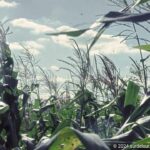




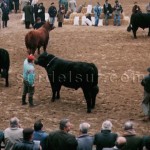

![Agriculture in Argentina: Crops, Productive Areas [2024] 8 Agriculture in Argentina: Crops, Productive areas](https://surdelsur.com/en/wp-content/uploads/sites/3/2015/03/agricultura-en-argentina-panorama-150x150.jpg)

